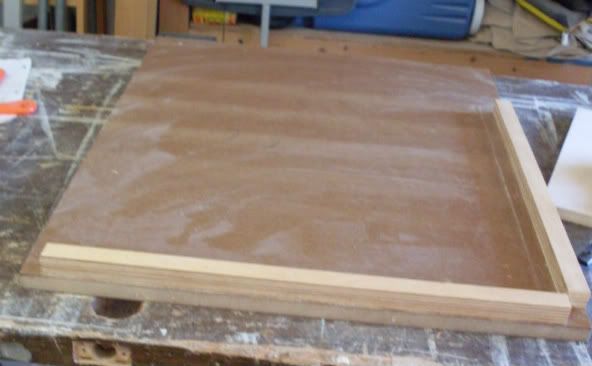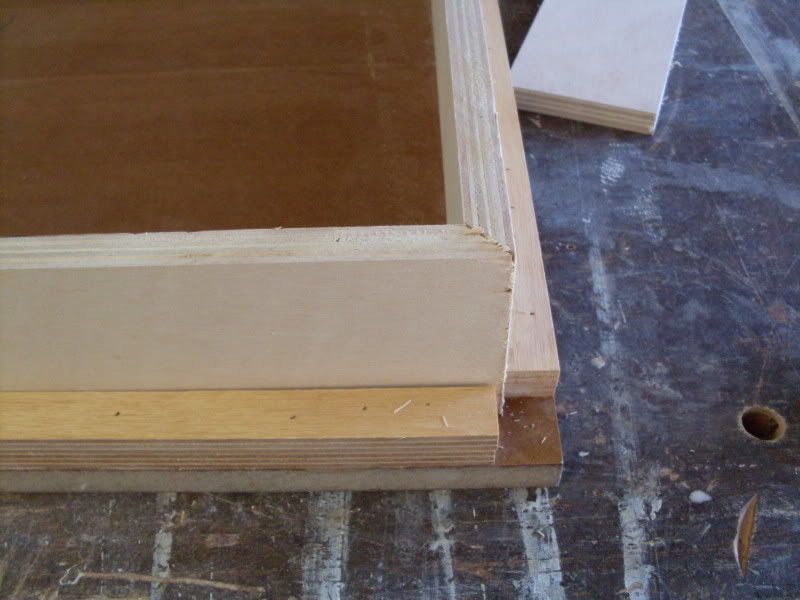 This is one of those projects I have always thought about, but never got around to building. That was until I had to build a box that had mitered corners. Trying to square those slippery joints and keep the joints aligned… well, that was tough.
This is one of those projects I have always thought about, but never got around to building. That was until I had to build a box that had mitered corners. Trying to square those slippery joints and keep the joints aligned… well, that was tough.
The square assembly jig couldn’t be any more simple. I took a scrap sheet of 3/4″ MDF I had laying around the shop – about 2 x 3 feet. I then took a scrap of 1/2″ cabinet grade birch plywood and ripped 1″ wide strips. I made sure the scrap MDF was perfectly square, then I glued and bradded a double stack of the plywood strips to the table, again ensuring I was perfectly square. I held the ‘junction’ of the two strips apart by about 1″, so I could see any miter joints I was gluing up.
 After I built this, I finished it with four coats of polyurethane to help prevent any glue from sticking to the jig.
After I built this, I finished it with four coats of polyurethane to help prevent any glue from sticking to the jig.
To use the jig, simply glue up the joint you want to build. Then, you can clamp the piece to the plywood strips however you see fit. Once the piece is glued up with the boards tight to the plywood fences, your assembly will be square. Pretty clever…
The best part of the jig is that you can use short clamps to grip the boards on small peices, or you can use the plywood fences as a contact point for larger bar clamps.

sweet jig, Tom. The simpler the better for me. Ironically I have a project coming up shortly that I needed something to square corners with. This will do perfectly, thanks!
Hey, Mike, my pleasure! Glad to help…
Great jig – Tom – as stated – the simpler the better. I was just wondering – do you think that a slot could be put on the inside of the jig – running diagonally from the junction of the two strips where you are gluing the project – to hold a T-bolt – which in turn would hold a perfectly square block – this could be made to any size needed – to brace again the inside of the project to help with the holding process while the glue dries? May not be needed but it would hold the project more secure to the plywood strips.
Larry – not a bad idea. But, I have also had a lot of success using one of those Rockler plastic squares to help back up the inside with the clamps.
Besides, if you are joining two pieces of different thicknesses, your corner block may not hit the joint exactly where it has to….
Tom – leave it to me to do it the hard way. I also have some of those Rockler plastic squares – but of course never gave them a thought – no wonder they have so much saw dust on them…. *sigh*
Hey, that’s OK, Larry. The thought escaped me for the longest time as well! 😉